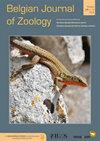首次在比利时引进非本土豆娘(Zygoptera,Coenagrionidae)
IF 1.1
4区 生物学
Q2 ZOOLOGY
引用次数: 2
摘要
外来入侵物种(IAS)的引入和传播是影响全球生物多样性和生态系统服务的最重要驱动因素之一(1)。世界范围内的人员和货物流动加速了生物入侵的速度(2)。人们普遍认为,制定解决外来入侵物种问题的战略的重要第一步是记录已经存在的外来物种以及可能到达特定地区的外来物种。因此,报告非本地物种非入侵部分的发生仍然很重要,因为非本地物种可以及时建立并表现出入侵行为。此外,关于引进途径和商品的数据对于制定预防战略以减少新的和可能具有破坏性的外来物种的到来至关重要(3)。关于入侵途径和机制的信息也用于外来物种风险评估、管理和管理。途径分析是减少非本地物种意外传播的第一步,也是重要的一步,随着欧盟新通过的关于IAS引入和传播的预防和管理的第1143/2014号法规(5,6),途径分析变得越来越重要。该法规包括起草关于意外物种引入优先途径的行动计划的规定。在这里,我们报道了两种外来豆娘的引进比利时:本文章由计算机程序翻译,如有差异,请以英文原文为准。
A first report of introduced non-native damselfly species (Zygoptera, Coenagrionidae) for Belgium
The introduction and spread of invasive alien species (IAS) constitutes one of the most important drivers affecting global biodiversity and ecosystem services (1). The rate of biological invasions is accelerated by the world-wide movement of people and goods (2).It is widely recognized that an important first step in developing a strategy for addressing the IAS problem is to document alien species already present as well as those likely to arrive in a particular region. Therefore, reporting on the occurrence of the non-invasive segment of non-native species remains important, since non-natives can become established and behave invasive in time. Moreover, data on pathways and commodities of introductions are crucial to inform preventive strategies to reduce the arrival of new and potentially damaging alien species (3). Information on the routes and mechanisms of invasions is also used in alien species risk assessments, management, monitoring and surveillance (4). Pathway analysis represents a first and important step of curtailing the accidental spread of non-native species and is becoming increasingly important with the newly adopted European Union regulation No 1143/2014 on the prevention and management of the introduction and spread of IAS (5, 6). This regulation includes provisions for the drafting of action plans on priority pathways of unintentional species introductions. Here, we report on the introduction of two species of damselfly alien to Belgium:
求助全文
通过发布文献求助,成功后即可免费获取论文全文。
去求助
来源期刊

Belgian Journal of Zoology
生物-动物学
CiteScore
1.90
自引率
0.00%
发文量
10
审稿时长
>12 weeks
期刊介绍:
The Belgian Journal of Zoology is an open access journal publishing high-quality research papers in English that are original, of broad interest and hypothesis-driven. Manuscripts on all aspects of zoology are considered, including anatomy, behaviour, developmental biology, ecology, evolution, genetics, genomics and physiology. Manuscripts on veterinary topics are outside of the journal’s scope. The Belgian Journal of Zoology also welcomes reviews, especially from complex or poorly understood research fields in zoology. The Belgian Journal of Zoology does no longer publish purely taxonomic papers. Surveys and reports on novel or invasive animal species for Belgium are considered only if sufficient new biological or biogeographic information is included.
 求助内容:
求助内容: 应助结果提醒方式:
应助结果提醒方式:


